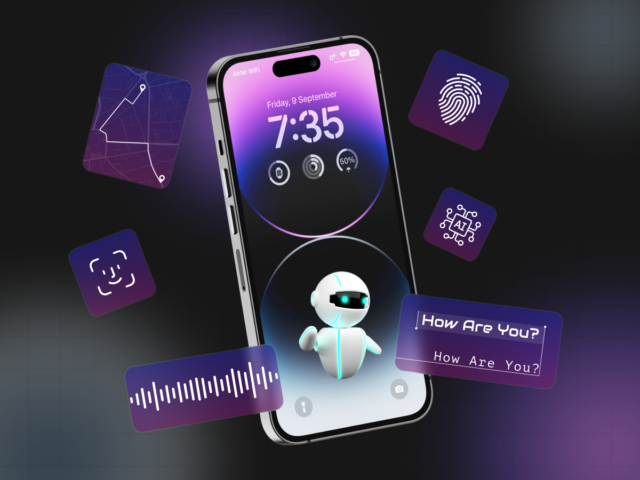Building a mobile app that supports AI-driven features involves several key steps, from defining your app’s purpose to integrating the right AI technologies. Here’s a comprehensive guide to help you through the process:

Table of Contents
Toggle1. Define the Purpose and Use Cases
- Identify User Needs: Understand the problems your app will solve for users. Conduct market research to identify pain points that AI can address, such as personalization, automation, or data analysis.
- Determine AI Features: Decide which AI-driven features will be most beneficial for your app. Common features include:
- Chatbots for customer support
- Personalized recommendations
- Image and speech recognition
- Natural language processing (NLP)
- Predictive analytics
2. Choose the Right AI Technology
- Machine Learning (ML): Determine if your app needs to leverage machine learning models. Use frameworks like TensorFlow, PyTorch, or Scikit-learn for building custom ML models.
- Pre-built AI Services: Consider using pre-built AI services and APIs such as:
- Google Cloud AI: Offers machine learning, NLP, and vision APIs.
- IBM Watson: Provides various AI services for text, language, and data analysis.
- Microsoft Azure Cognitive Services: Offers a range of AI capabilities, including computer vision and voice recognition.
- Open-source Solutions: Explore open-source libraries that can help you integrate AI features, such as OpenCV for image processing or NLTK for natural language processing.
3. Design the User Experience (UX)
- User-Centric Design: Create wireframes and prototypes that focus on user experience. Ensure the AI features are intuitive and enhance the user experience rather than complicating it.
- Feedback Mechanisms: Incorporate features that allow users to provide feedback on AI-driven functionalities. This feedback can be invaluable for refining your algorithms and improving user satisfaction.
4. Develop the Mobile App
- Select the Development Approach: Choose between native, hybrid, or cross-platform development based on your target audience and budget:
- Native Development: Best for performance and full access to device capabilities. Use Swift for iOS and Kotlin for Android.
- Cross-Platform Development: Use frameworks like Flutter or React Native to build apps that run on both iOS and Android.
- Integrate AI Features: Implement the chosen AI technologies into your app. This could involve:
- Connecting to AI APIs for features like image recognition or NLP.
- Integrating machine learning models that you’ve trained into the app’s architecture.
5. Data Management and Security
- Data Collection: Define what data your app will collect and how it will be used. Ensure that data collection practices comply with relevant regulations, such as GDPR or CCPA.
- Data Storage: Decide on data storage solutions. You can use cloud services like AWS, Google Cloud, or Firebase for scalable storage options.
- Implement Security Measures: Ensure that user data is securely stored and transmitted. Use encryption and secure APIs to protect sensitive information.
6. Testing and Quality Assurance
- Conduct Thorough Testing: Test the app for functionality, performance, and user experience. Ensure that the AI features perform accurately and reliably under various conditions.
- User Testing: Gather feedback from real users to identify areas for improvement. Focus on how users interact with AI features and refine them based on their input.
7. Deployment
- Choose Distribution Channels: Decide where to launch your app. This could include the Apple App Store, Google Play Store, or other platforms depending on your target audience.
- Prepare for Launch: Create a marketing plan to promote your app. Highlight the AI-driven features that set your app apart from competitors.
8. Monitor and Update
- Track Performance Metrics: Use analytics tools (like Google Analytics or Firebase Analytics) to monitor how users interact with your app and its AI features. Pay attention to engagement rates and user feedback.
- Iterate and Improve: Continuously update the app based on user feedback and analytics data. Refine AI models to improve accuracy and performance over time.
9. Stay Informed on AI Trends
- Keep Learning: The field of AI is rapidly evolving. Stay updated on the latest advancements, frameworks, and best practices. Participate in AI communities, attend workshops, and read research papers to keep your skills current.
Conclusion
Building a mobile app that supports AI-driven features requires careful planning, the right technology, and a focus on user experience. By following these steps, you can create an app that leverages AI to deliver unique and valuable functionalities, enhancing user engagement and satisfaction. With the right approach, your AI-powered mobile app can stand out in a competitive market.


No responses yet